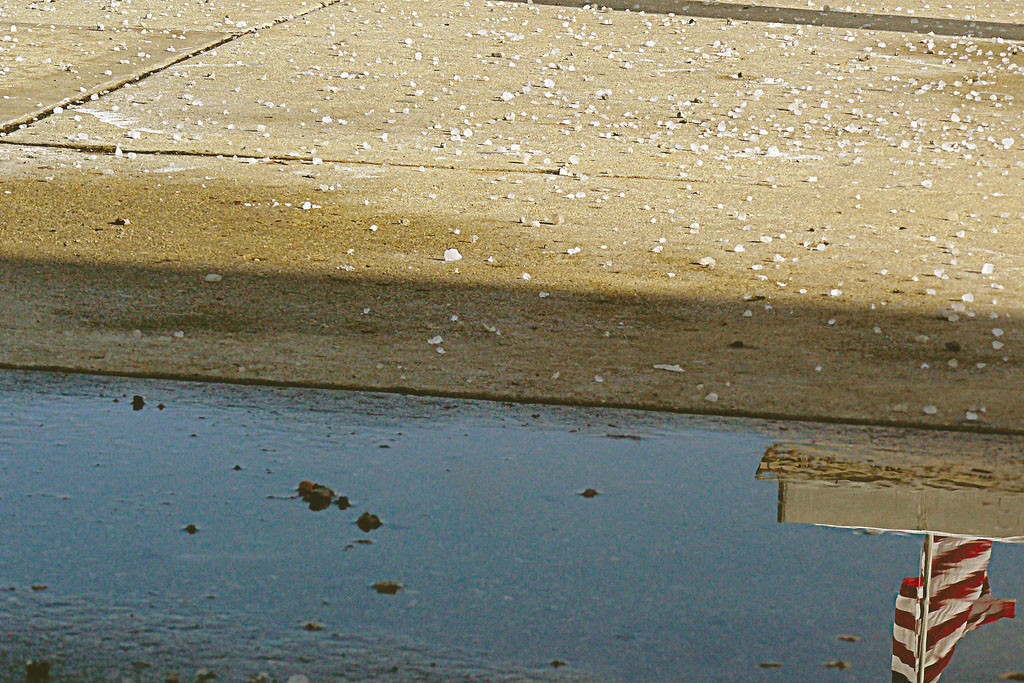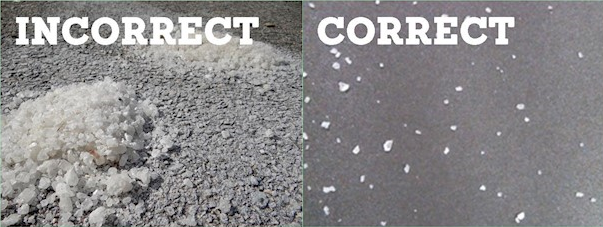
Water is part of who we are in Minnesota. But lakes and creeks in our cities are getting salty. Fifty lakes and streams in Minnesota have tested above EPA standards for salt — including Como Lake, Diamond Lake, Powderhorn Lake, Wirth Lake, Bassett Creek, Battle Creek, Elm Creek, and Minnehaha Creek! Another 120 lake and streams have levels near the standard!
In winter, salt is applied to roads and walkways to melt ice and snow — this is where most of the chloride in our water comes from. The salt dissolves, runs into storm drains, and most storm drains go directly into local waterways.
The problem with chloride is that it builds up over time so waterways are getting saltier and saltier every year. The Pollution Control Agency estimates 365,000 tons of road salt is applied in the Twin Cities each year. A University of Minnesota study found that about 78% of salt applied to roads in the Twin Cities ends up in groundwater, lakes, rivers, or wetlands. A bit of perspective, one teaspoon of road salt will pollute five gallons of water permanently!
Salt buildup is hurting aquatic life and the health of our waterways — one of our most valuable resources. Over time, chloride will work its way into groundwater and other drinking water sources. It’s difficult and very expensive to remove chloride from tap water.
Here are some tips that you can use at your home to prevent pollution in our lakes and rivers: 
• Prevention is the first step! Shovel, sweep, or blow the snow off your surfaces before it builds and gets slippery.
• Make sure you have the right tools – a sidewalk/ice scraper will go a long way if you get ice buildup.
• The best alternatives are salt-free: sand, rock or small gravel mix, coffee grounds, kitty litter or an outdoor snow/ice carpet. Sweep up excess so it doesn’t run off into the storm drain!
• If you need to use salt, then use no more than 1 pound (about 1 coffee mug full) of salt per 1,000 square feet (about the size of a two car driveway or 10 standard sidewalk squares).
• Make sure salt is spread evenly and thinly – no big piles or clumps. Sweep up excess so it doesn’t run off into the storm drain!
• More salt does not mean more melting! Excess will just runoff into our favorite lakes and rivers.
• Regular road salt doesn’t melt ice and snow at temperatures less than 15°f! (See salt-free alternatives above if it’s too cold for salt)

For winter maintenance professionals, you can get a free Smart Salt Certification.
Read the Minnesota Pollution Control Agency study on chloride in the Twin Cities Metro Area.